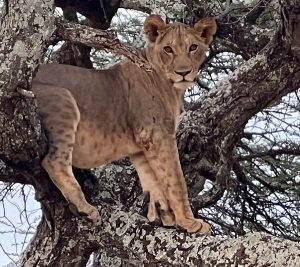Conquering Kilimanjaro: A Guide to Summiting Africa’s Tallest Peak
Kilimanjaro, standing at an impressive 19,341 feet, is not only the tallest peak in Africa but also one of the most sought-after summits for avid hikers and climbers. Conquering this iconic mountain is a challenging yet rewarding experience that requires careful planning, the right gear, and proper training. If you dream of standing at the "Roof of Africa," here is a guide to help you achieve your goal.
Planning Your Kilimanjaro Expedition
Before embarking on your Kilimanjaro expedition, it is essential to carefully plan every aspect of your journey. One of the first decisions you will need to make is choosing a reputable tour operator to guide you up the mountain. Sunset Africa Safari is a trusted company that offers well-organized and safe Kilimanjaro expeditions. For booking requests, clients can contact info@sunsetafricasafari.com to secure their spot on a scheduled climb.
When planning your expedition, consider factors such as the best time to climb, route options, and the duration of your trek. Kilimanjaro can be climbed year-round, but the dry seasons of January to March and June to October are considered the best times to summit. There are several route options to choose from, each offering a different experience in terms of scenery and difficulty. The Machame and Lemosho routes are popular choices for climbers looking for a challenging yet rewarding trek.
Essential Gear and Training for Success
Proper gear and training are crucial for a successful Kilimanjaro summit. Here is a list of essential gear you will need for your expedition:
- Layered Clothing: Kilimanjaro’s diverse climate requires you to be prepared for both hot days and cold nights. Pack layers to adjust to changing temperatures.
- Hiking Boots: Invest in a good pair of hiking boots that provide ankle support and have a sturdy sole for navigating rocky terrain.
- Sleeping Bag: Choose a sleeping bag rated for cold temperatures to ensure a comfortable night’s rest at high altitudes.
- Trekking Poles: These will help with balance and stability on steep and uneven terrain.
- Headlamp: Essential for early morning summit attempts when it is still dark.
In addition to the right gear, proper training is essential for a successful Kilimanjaro summit. Focus on building your cardiovascular endurance and leg strength through activities such as hiking, running, and cycling. Altitude acclimatization is also crucial, so consider incorporating high-altitude training hikes into your preparation.
Conquering Kilimanjaro is a challenging but achievable goal with careful planning, the right gear, and proper training. By following this guide and choosing a reputable tour operator like Sunset Africa Safari, you can make your dream of summiting Africa’s tallest peak a reality. Start your journey today and experience the breathtaking beauty of Kilimanjaro from the top of the world.


